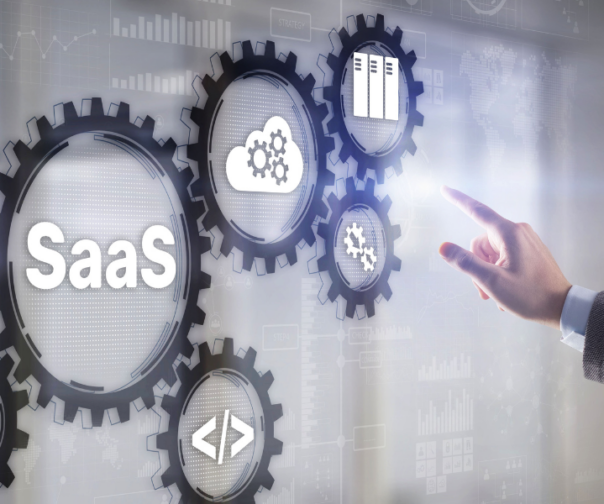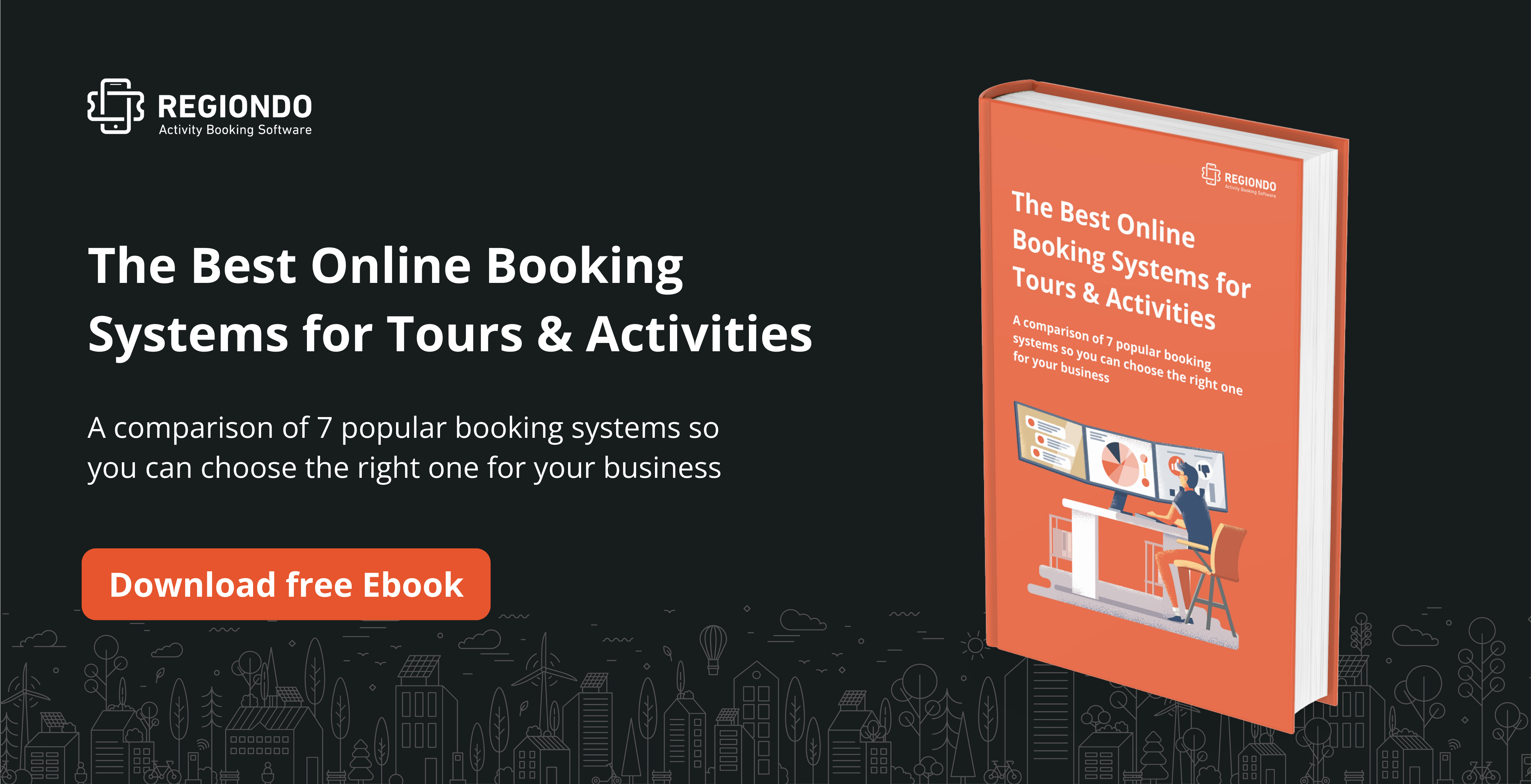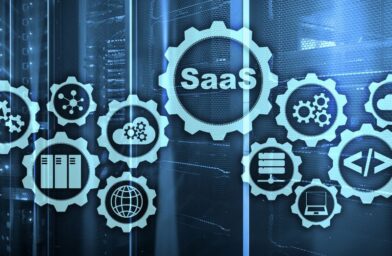In this era of increased digitization in the travel and hospitality industry, travelers are inclined to make their bookings online.
It’s estimated that tours and activities online penetration will reach 21% in 2020. Therefore, having an efficient and user-friendly online booking system is one of the key determinants for the success of your business.
IT strategies for making these reservations are numerous seeing that technology has advanced so much. But the solution boils down to the type of booking system you choose for your tour or activity business.
You can either go for in-house development or use a SaaS (Software as a Service) booking system. SaaS systems offer several benefits including lower cost, scalability, and ease of implementation among others. No wonder this is becoming the most preferred solution by most companies.
In this article, we’ll delve deeper and explain what in-house and SaaS services are. We’ll also compare these two solutions and help you make a more informed decision when opting for your company’s booking system.
What is a SaaS Booking System?
SaaS is a software solution that’s hosted and managed by a service provider and used by businesses remotely.
In the past, for a customer to make a reservation, they would have to call your company and talk directly to a staff member. This process is tedious, to say the least.
With the introduction of online solutions, the process is more streamlined. Customers can survey the available dates and times, weigh their options, and make a booking decision at any time or day. No need to talk to anyone and no more limitation to business days and working hours.
To set up this online booking system, you need a program that will hold all the necessary information and enable the booking process. This is where the SaaS system comes in.
SaaS programs allow your company to use a booking system without the need for complicated and expensive infrastructure or hiring IT professionals to do the work. SaaS providers host the software in their own location or on the cloud and make the program available to different businesses in various locations.
Tour and activity businesses today opt for SaaS solutions because of how efficient, cost-effective, and user-friendly they are.
In-House or On-Premises Solution
The in-house solution, just as the name suggests, requires you to build your own software within your business and using your own servers.
Installing on-premises software involves getting human resources to work on the system and buying the necessary IT infrastructure. You can source the program from a 3rd party provider but install it in your own servers unlike with a SaaS solution where the software is hosted at the provider’s servers.
Granted, with in-house development, you have the advantage of owning the product, having access to all the data, and being able to build the system as per your needs. But all these demands extra time and money from you that could have been channeled to your core business which is selling tours and activities.
Comparison
Let’s take a closer look at how in-house development compares to SaaS booking solutions.
Cost
One aspect of a SaaS booking system that stands out the most is how cost-effective it is compared to on-premises solutions.
Most SaaS providers offer several packages depending on the features you want. These packages are available at different price points for businesses to choose from. The varied pricing makes it easier for your tour or activity company to select the most appropriate package as per your company’s budget and requirements.
The only other cost is the transaction fee which covers the costs for credit cards and 3rd party payment service providers like Stripe.
As for on-premises development, firstly, the upfront cost is much higher. You need funds to hire IT staff dedicated to setting up the software and hardware. Then there is the recurring maintenance cost and remuneration for your IT personnel.
All these costs add up and result in a more expensive solution. All in all, a SaaS booking system will usually end up being cheaper. You can look at our other article giving a detailed breakdown of the costs involved in SaaS vs on-premises development.
Winner: SaaS Booking System

Estimated cost of using a SaaS booking system vs building an in-house solution. Source.
Implementation and ease of use
One of the benefits of SaaS booking solutions is the speed of implementation. As soon as you subscribe to the software, it’s available for use in your company.
In addition, SaaS solutions are typically user-friendly, making it simple to understand and operate. You will not need to hire internal IT experts to operate it.
An in-house system on the other hand requires time to build and install in the business premises and devices. It is therefore not as quickly available as the SaaS solution. More to that, when you need to upgrade your system, the in-house booking system may need to go through some downtime, which means you won’t be able to accept bookings for a while.
Winner: SaaS Booking System
Customization
On-premises solutions offer more flexibility in terms of customization. Since you have access and control over the whole system, it’s easier to customize almost everything.
On the other hand, some SaaS booking systems are tailored for tours and activities so you will usually find everything you need to operate your business. If something is missing, you might be able to request a feature from your provider but there is no guarantee it will be implemented or how long it would take.
Winner: In-house development
Maintenance and Support
With any software product, good maintenance and support are necessary to set up and keep the system running. This will involve taking care of devices, infrastructure, and features of the program.
With SaaS booking systems, the 3rd party provider handles all these aspects of the product. You don’t need internal staff to handle the maintenance. You can also easily get support from the provider either through live chat, manuals, or social media.
In-house development on the other hand requires you to handle the maintenance and support. Your hired IT staff will look into any issues that need attention. Any questions concerning the features of the software should ideally be answered by the experts on your team or externally, if you hired an agency to build your system..
All in all, though maintenance and support are available with both SaaS and on-premises software, the SaaS support will come at no additional cost or effort on your end as the user.
Winner: SaaS Booking System
Scalability
One of the benefits of SaaS solutions includes the ability to seamlessly grow and expand your business with the software, without adding considerable costs.
If for any reason, you want to scale down, it’s also relatively easy to do so with a SaaS system. This can help minimize costs during times when business is slow.
But scaling an in-house system is not as easy or straightforward. You need a long-term plan to be able to expand or upgrade your system. This may also end up being quite costly.
Winner: SaaS Booking System
Security
Security is one of the biggest concerns with big brands or companies when dealing with 3rd party software providers. Are the systems well guarded? Is your data safe?
If you are working with high-end SaaS providers, like Regiondo, you can bet on getting top-notch security. The provider handles all the security issues so your business does not have to worry about it. To be certain of this, it’s important to know the user and data protection mechanisms or techniques set up in the provider’s data centers.
Some of the most common protection mechanisms include SSL, firewalls, and intrusion detection. You can also go a step further and request the 3rd party’s certifications for the security practices they utilize. This will give you peace of mind and assure you of the safety of your data and your business.
On the flip side, enforcing security and regulatory requirements with in-house development typically requires more time and resources.
Winner: SaaS Booking System
Should You Switch to a SaaS Booking System?
Now that we’ve covered the basics, let’s go through the key questions you should answer before opting for a software as a service provider:
- What are your reasons for choosing a SaaS service?
This is the most fundamental question your company should answer.
Since you’re reading this article, you probably have a pressing need that’s making you consider getting a SaaS booking system. It’s safe to say that that is a sign you do need this service.
But just to be clear, you need to have a concrete business reason for getting a SaaS solution. The need to provide a seamless and easy booking process for potential clients is by far the most vital reason for getting a SaaS booking system.
- Do you have a development team?
If your tour company does not have IT personnel to set up and run an in-house booking software, and cannot afford to get such a team, then going for a SaaS provider is better.
All the backend running of the software and the infrastructure maintenance is handled by the provider in a SaaS program. You, therefore, don’t need internal staff to do this work.
- Do you need custom features?
If you run a large tour company or attraction, it could make sense to introduce custom changes based on the volume of sales you have. In these situations, in-house development will give you more options. That said, it’s costly and SaaS solutions nowadays should be able to cover your requirements in most situations.
Conclusion
So there you have it, your guide to deciding between in-house development and SaaS booking solution.
Both models have their pros and cons based on:
- Your budget
- Level of customization desired
- Security needs
- Implementation speed
- Maintenance and support.
A SaaS booking system will typically save you huge upfront costs of setting up software and acquiring IT infrastructure. You can also get top-notch security if you go for a high-end provider like Regiondo.
You might also like:



